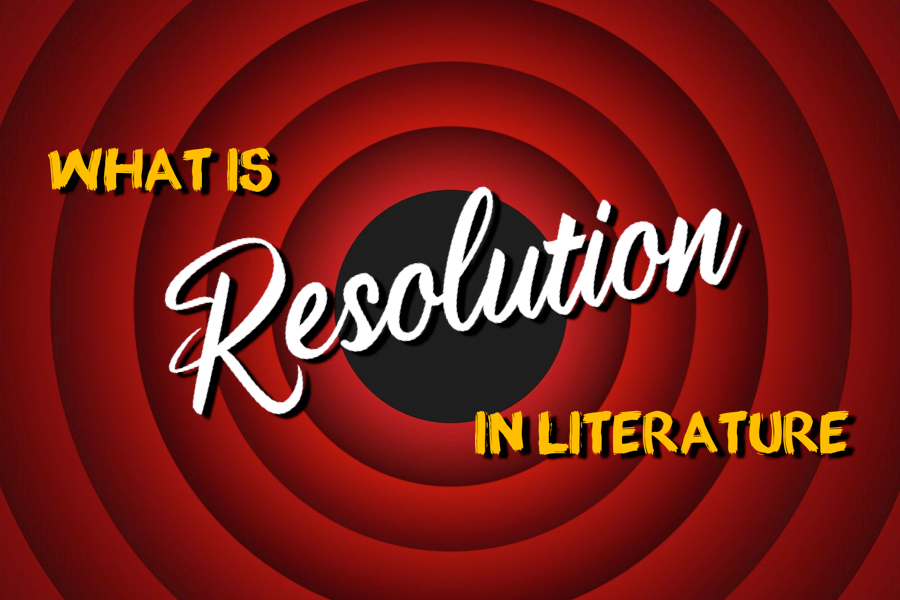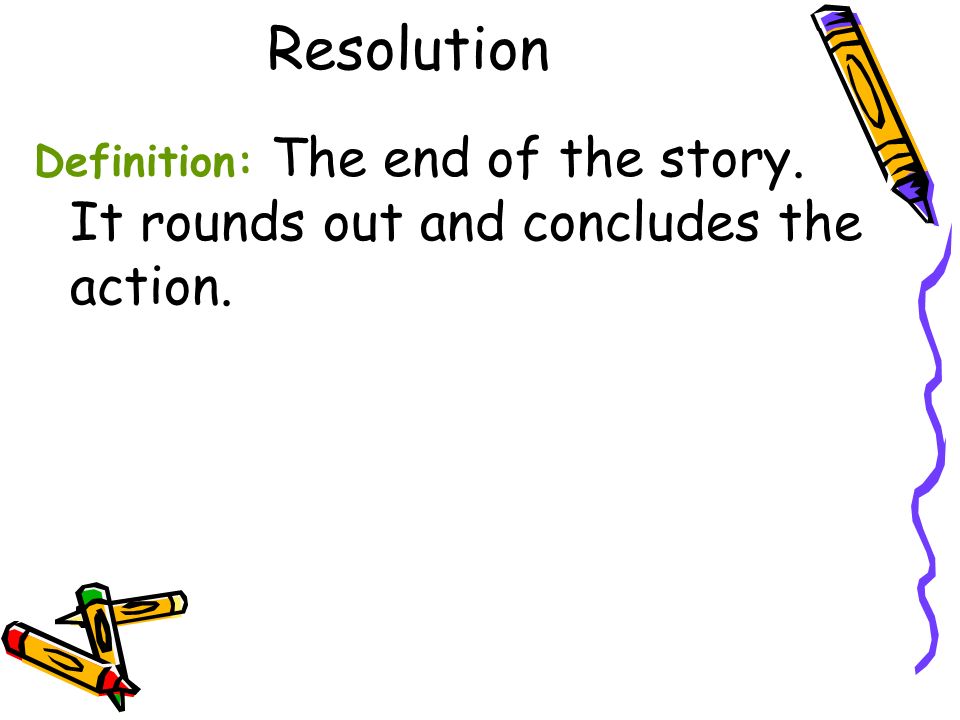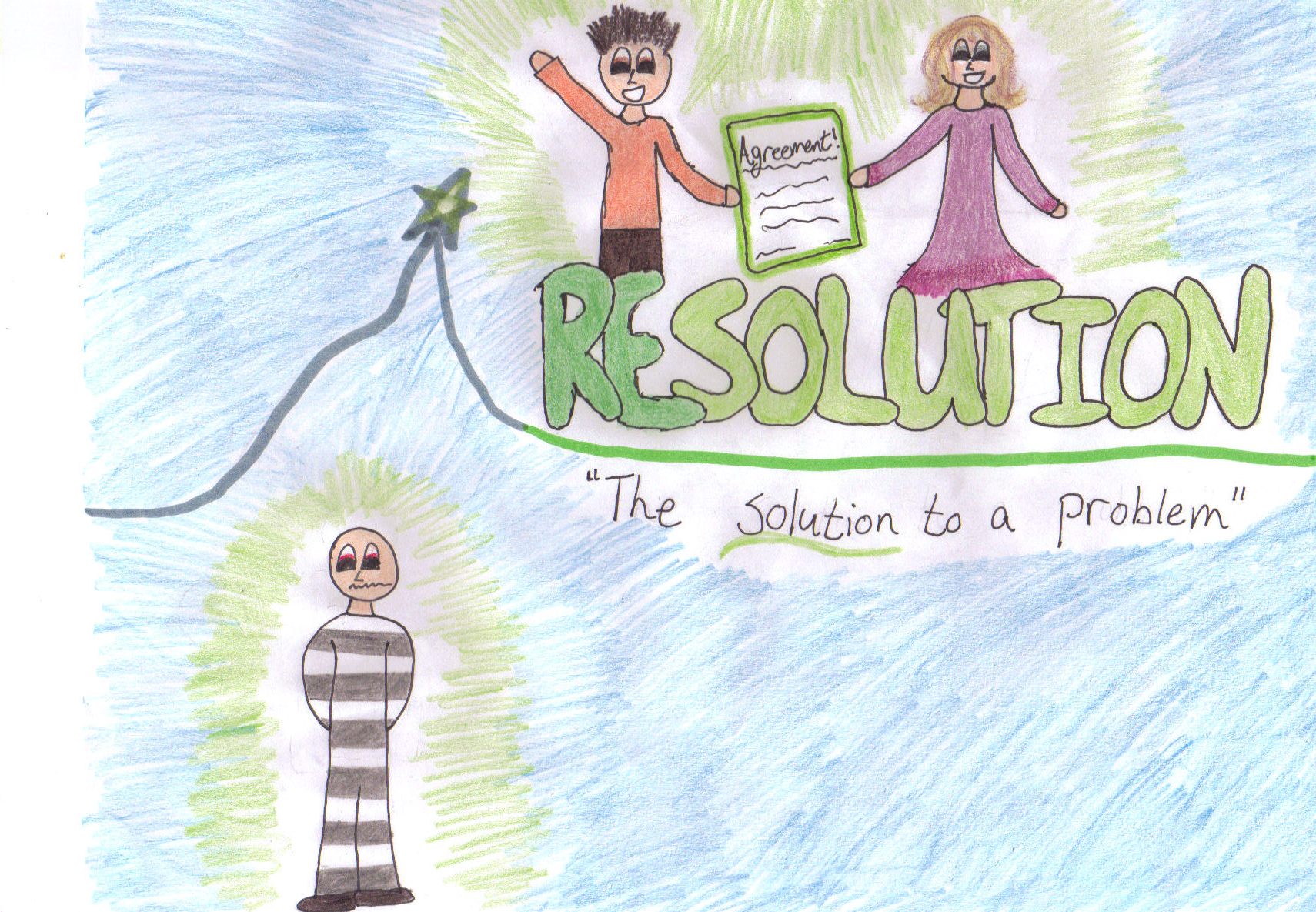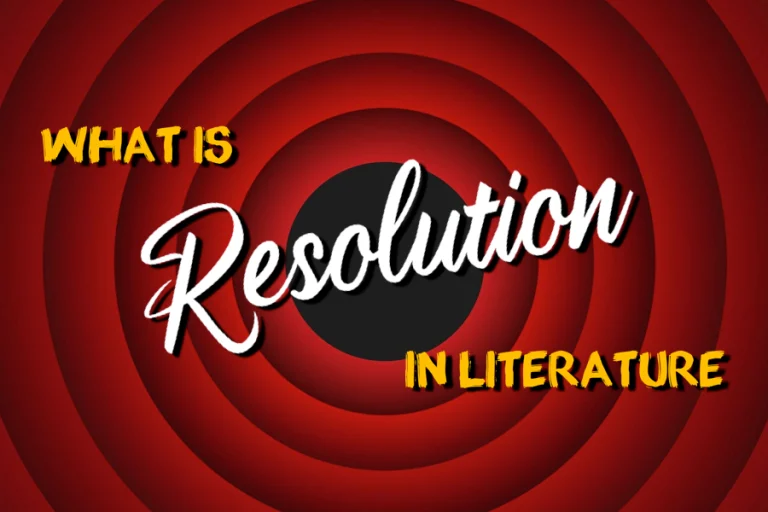The resolution definition literature represents the most crucial turning point in any story where conflicts finally reach their conclusion.
Every reader experiences that satisfying moment when loose ends tie together and questions get answered.
This literary device serves as the foundation for memorable storytelling across novels, short stories, and dramatic works.
Understanding resolution helps writers craft compelling narratives while enabling readers to appreciate the artistry behind their favorite books.

What is Resolution in Literature?
Resolution in literature refers to the final outcome of a story’s central conflict where all major plot threads reach their conclusion.
The resolution definition literature encompasses the moment when tensions dissolve and characters face the consequences of their actions.
This literary element typically appears near the story’s end, following the climax and falling action.
Writers use resolution to provide closure for readers who have invested emotionally in the narrative journey.
The resolution answers the fundamental question: “What happens next?”
Every successful story requires a well-crafted resolution to satisfy reader expectations and complete the narrative arc.
The Five Elements of Plot Structure
Understanding resolution requires knowledge of the complete plot structure that includes five essential components.
Exposition
- The exposition introduces characters, setting, and background information necessary for story comprehension.
- Writers establish the story world and provide context for upcoming events during this opening phase.
- This foundation allows readers to understand character motivations and situational dynamics.
Rising Action
- Rising action builds tension through a series of events that complicate the initial situation.
- Conflicts intensify as characters face obstacles and make decisions that propel the story forward.
- This section creates suspense and keeps readers engaged through escalating drama.
Climax
- The climax represents the story’s turning point where the main conflict reaches its peak intensity.
- Characters must confront their greatest challenges and make crucial decisions that determine the outcome.
- This moment of highest tension serves as the emotional center of the narrative.
Falling Action
- Falling action shows the immediate consequences of the climax and begins moving toward resolution.
- Loose plot threads start coming together as the story transitions from conflict to conclusion.
- This phase bridges the gap between peak tension and final resolution.
Resolution
- The resolution provides the final answers and shows how conflicts ultimately resolve.
- Characters reach their destinations, both literally and figuratively, in this concluding phase.
- This element brings the story full circle and delivers the satisfaction readers seek.
Types of Resolution in Literature
Different types of resolution serve various narrative purposes and create distinct reader experiences.
Closed Resolution
- Closed resolution provides complete answers to all major plot questions and conflicts.
- Readers receive clear information about character fates and story outcomes.
- This type offers maximum closure and leaves minimal room for interpretation.
- Classic fairy tales often employ closed resolution with “happily ever after” endings.
Open Resolution
- Open resolution leaves certain questions unanswered and invites reader interpretation.
- Writers deliberately create ambiguity to encourage discussion and personal reflection.
- This approach allows readers to imagine their own conclusions beyond the story’s end.
- Modern literary fiction frequently uses open resolution to explore complex themes.
Twist Resolution
- Twist resolution surprises readers by revealing unexpected information that changes everything.
- The final revelation forces readers to reconsider their assumptions about the story.
- This technique creates memorable endings that encourage re-reading and discussion.
- Mystery novels often employ twist resolution to deliver shocking conclusions.
Cyclical Resolution
- Cyclical resolution brings the story back to its beginning, creating a circular narrative structure.
- Characters may return to their starting point with new knowledge or changed perspectives.
- This technique emphasizes themes of growth, learning, and the cyclical nature of experience.
The Purpose of Resolution in Storytelling
Resolution serves multiple important functions that enhance the overall reading experience.
Provides Closure
- Resolution offers emotional satisfaction by answering questions raised throughout the story.
- Readers need to know how conflicts resolve and what happens to characters they care about.
- This closure allows readers to process the story’s events and move forward emotionally.
Delivers the Theme
- The resolution often reveals the story’s central message or moral lesson.
- Writers use this final moment to communicate their intended meaning to readers.
- Themes become clearest when characters face the consequences of their choices.
Creates Emotional Impact
- Well-crafted resolution generates lasting emotional responses that stay with readers.
- The final moments determine whether readers feel satisfied, moved, or thoughtful.
- This emotional resonance makes stories memorable and meaningful.
Completes Character Arcs
- Resolution shows how characters have changed through their journey.
- Readers witness character growth, learning, and transformation in the final scenes.
- This completion provides satisfaction and validates the reader’s investment in the characters.
Examples of Resolution in Famous Literature
Examining resolution in well-known works demonstrates various approaches to ending stories effectively.
Pride and Prejudice by Jane Austen
- Elizabeth Bennet and Mr. Darcy overcome their initial misunderstandings and marry for love.
- The resolution reveals how both characters have grown and changed throughout the story.
- Secondary characters also find happiness, creating a satisfying closed resolution.
- This ending emphasizes themes of love, understanding, and personal growth.
The Great Gatsby by F. Scott Fitzgerald
- Nick Carraway reflects on Gatsby’s death and the corruption of the American Dream.
- The resolution provides a melancholy conclusion that critiques 1920s society.
- Gatsby’s death represents the death of idealism and innocent hope.
- This ending creates a powerful emotional impact through its tragic finality.
Romeo and Juliet by William Shakespeare
- The young lovers’ deaths finally end the feud between their families.
- The resolution shows how hatred and violence ultimately destroy what we love most.
- The tragedy serves as a cautionary tale about the consequences of unresolved conflict.
- This ending delivers a clear moral message about love and hate.
To Kill a Mockingbird by Harper Lee
- Scout Finch gains understanding about prejudice and moral courage through her experiences.
- The resolution shows her growth from innocence to a more complex understanding of the world.
- Atticus Finch’s integrity shines through despite his legal defeat.
- This ending emphasizes themes of justice, morality, and coming-of-age.

How to Write Effective Resolution
Creating compelling resolution requires careful planning and attention to reader expectations.
Tie Up Loose Ends
- Address all major plot threads and character arcs introduced throughout the story.
- Readers notice when important questions remain unanswered or conflicts unresolved.
- Make a list of all plot elements to ensure nothing gets forgotten.
Stay True to Character
- Ensure that character actions in the resolution match their established personalities.
- Characters should behave consistently with their development throughout the story.
- Sudden personality changes feel artificial and undermine reader investment.
Match the Tone
- The resolution should match the overall tone and genre of your story.
- A comedy needs a light, happy resolution while a tragedy requires a somber conclusion.
- Tonal consistency maintains reader immersion and satisfaction.
Avoid Deus Ex Machina
- Don’t introduce convenient solutions that haven’t been properly set up earlier.
- Resolution should feel earned through character actions and story development.
- Unexpected rescues or magical solutions often frustrate readers.
Consider Your Audience
- Different audiences have different expectations for resolution.
- Young adult readers often prefer hopeful endings while literary fiction readers accept ambiguity.
- Understanding your audience helps you craft appropriate resolution.
Common Mistakes in Resolution Writing
Writers often struggle with resolution, leading to unsatisfying conclusions.
Rushing the Ending
- Many writers hurry through the resolution without giving it proper development.
- This rush prevents readers from fully processing the story’s conclusion.
- Take time to properly explore the resolution’s implications and emotions.
Leaving Too Many Questions
- While some ambiguity can be effective, leaving too many questions frustrates readers.
- Balance mystery with closure to maintain reader satisfaction.
- Answer the most important questions while leaving room for interpretation.
Changing Character Behavior
- Characters who act completely differently in the resolution break reader trust.
- Maintain character consistency even while showing growth and change.
- Character development should feel natural and earned.
Introducing New Information
- Avoid revealing major plot points or character information in the resolution.
- New information should support the conclusion rather than changing everything.
- The resolution should feel like a natural outcome of previous events.
The Role of Resolution in Different Genres
Different literary genres use resolution in unique ways to serve their specific purposes.
Mystery Fiction
- Mystery resolution must reveal the solution to the central puzzle.
- All clues should logically lead to the final revelation.
- The detective explains how they solved the case, satisfying reader curiosity.
Romance Literature
- Romance resolution typically involves the main characters finding love.
- The relationship obstacles are overcome through understanding and growth.
- Happy endings are expected and provide emotional satisfaction.
Science Fiction
- Science fiction resolution often explores the consequences of technological or social change.
- The story’s speculative elements reach their logical conclusion.
- Themes about humanity and progress are explored through the resolution.
Horror Literature
- Horror resolution may involve defeating the monster or accepting its permanent presence.
- The conclusion often leaves readers with lingering unease or dread.
- Survival doesn’t always guarantee happiness in horror stories.
Resolution vs. Conclusion: Understanding the Difference
Many readers confuse resolution with conclusion, but these terms have distinct meanings.
Resolution
- Resolution refers to the solving of the story’s central conflict.
- It answers the question of how the main problem gets resolved.
- This element focuses on conflict outcomes and character destinations.
Conclusion
- Conclusion refers to the story’s ending as a whole.
- It includes resolution but also encompasses final scenes and closing thoughts.
- The conclusion provides the complete ending experience for readers.
The Psychology of Resolution
Understanding why readers need resolution helps writers create satisfying endings.
Closure Psychology
- Humans naturally seek completion and answers to unfinished business.
- Stories tap into this psychological need through well-crafted resolution.
- Lack of closure can create anxiety and dissatisfaction in readers.
Emotional Catharsis
- Resolution provides emotional release after building tension throughout the story.
- Readers experience catharsis when conflicts finally resolve.
- This emotional journey creates lasting impact and satisfaction.
Pattern Recognition
- Readers expect certain patterns in storytelling structure.
- Resolution fulfills these expectations and provides predictable satisfaction.
- Breaking patterns should be done deliberately and for specific effect.
Resolution in Modern Literature
Contemporary literature often experiments with traditional resolution structures.
Postmodern Approaches
- Postmodern literature frequently challenges traditional resolution expectations.
- Authors may deliberately frustrate readers or provide multiple possible endings.
- This approach encourages active reader participation and interpretation.
Minimalist Resolution
- Some modern writers prefer subtle, understated resolution.
- The conclusion may be implied rather than explicitly stated.
- This technique requires readers to infer the resolution from context.
Fragmented Narratives
- Non-linear storytelling presents unique resolution challenges.
- The resolution may be revealed gradually throughout the story.
- Readers must piece together the complete picture from scattered information.
Teaching Resolution to Students
Educators can help students understand resolution through various approaches.
Story Analysis
- Examine resolution in familiar stories to identify common patterns.
- Discuss how different types of resolution affect reader experience.
- Compare resolution effectiveness across different genres and authors.
Creative Writing Exercises
- Have students write multiple endings for the same story.
- Practice different types of resolution to understand their effects.
- Peer review helps students recognize effective resolution techniques.
Visual Aids
- Use plot diagrams to show where resolution fits in story structure.
- Visual representations help students understand the concept clearly.
- Graphic organizers can track how conflicts resolve throughout stories.

The Future of Resolution in Literature
Technology and changing reader preferences influence how resolution evolves.
Interactive Media
- Digital storytelling allows for multiple resolution paths.
- Readers can choose their preferred ending through interactive elements.
- This technology creates personalized resolution experiences.
Serialized Content
- Online publishing enables ongoing stories with delayed resolution.
- Readers may wait months or years for final resolution.
- This format changes how writers approach resolution timing.
Global Influences
- International literature brings different resolution traditions to English-speaking audiences.
- Cultural exchange influences how Western writers approach story endings.
- This diversity enriches the possibilities for resolution techniques.
FAQs
What is the best definition of resolution?
In literature, resolution is the part of the story where the conflict is resolved and loose ends are tied up, bringing the narrative to a close.
What is an example of a resolution?
In Harry Potter and the Sorcerer’s Stone, the resolution occurs when Harry defeats Quirrell/Voldemort and returns safely to the Dursleys for the summer.
What is the difference between climax and resolution?
The climax is the turning point and most intense moment of the story, while the resolution follows it and shows the outcome or conclusion.
How is resolution defined in a narrative?
In narrative structure, the resolution is the final stage after the falling action, where the main conflict is settled and the story ends.
What best defines resolution in literature?
Resolution is the literary term for the conclusion of a plot, where characters’ fates are revealed and story arcs conclude.
What do you mean by resolution?
“Resolution” refers to the solution or conclusion of a problem; in literature, it’s how the plot’s central conflict is wrapped up.
Conclusion
Resolution definition literature encompasses the essential element that brings stories to their satisfying conclusion.
This crucial component answers questions, resolves conflicts, and provides the closure readers crave.
Understanding resolution helps both writers and readers appreciate the artistry behind effective storytelling.
The best resolutions feel both surprising and inevitable, providing emotional satisfaction while staying true to the story’s established patterns.
Whether closed or open, simple or complex, resolution serves as the bridge between the story world and the reader’s return to reality.
Mastering resolution techniques enables writers to create memorable endings that resonate with readers long after the final page.
The power of resolution lies not just in answering questions but in revealing the deeper truths that make stories meaningful and unforgettable.

